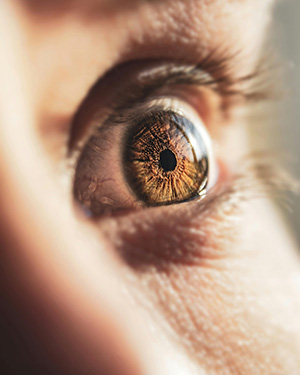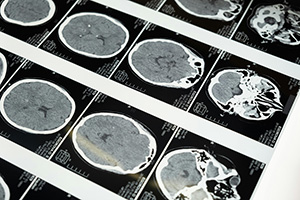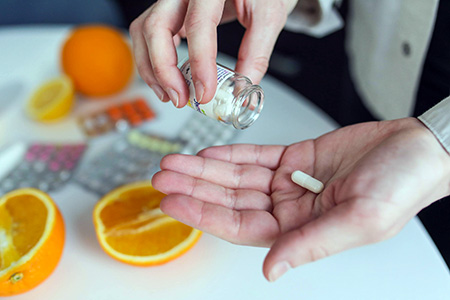What is ‘Pre-Diabetes’ and What Should I Do About It?

Diabetes is a condition that causes elevated levels of sugar in the blood. Normally, the amount of sugar in the bloodstream is tightly controlled by a hormone called insulin. Insulin is produced by the pancreas, which is an organ located just behind the stomach.
When we eat, insulin is released to help the body absorb glucose (sugar) from food. Once glucose enters the bloodstream, insulin ensures it is delivered into the cells, where it provides energy. Our brains rely exclusively on glucose for fuel, and insulin helps direct this sugar to brain cells to maintain our ability to think. If there is excess glucose in the bloodstream, insulin works to store it for later use. Without insulin, glucose would remain in the bloodstream and not enter the cells, leaving the body unable to convert it into energy. Over time, this could result in dangerously high blood sugar levels.
Diabetes occurs when the body either becomes resistant to insulin or doesn’t produce enough of it, both of which lead to elevated glucose levels in the blood. By measuring the levels of glucose in the bloodstream of normal people, we can identify when someone has diabetes. This is because their blood glucose levels are elevated beyond what is considered normal.
Pre-diabetes is a condition where blood sugar levels are higher than normal but not high enough to meet the criteria for diabetes. It serves as an early warning sign that someone is close to becoming diabetic or on the borderline.
If I Have Pre-Diabetes, Does That Mean I Will Become Diabetic?
The short answer is - not necessarily. It is quite possible to reverse the situation so that you are no longer in this category of almost becoming diabetic. It is important to remember however, that when people are in this category, they are quite likely to become diabetic. It often requires a lot of effort to reverse this problem, and I have explained this in further detail below:
How Can I Tell If I Have Pre-Diabetes?

Pre-diabetes usually does not cause noticeable symptoms, which is why it often goes undetected. However, some people may experience subtle signs or symptoms that can indicate higher blood sugar levels. Here are some potential indicators to watch for:
- Increased Thirst: Feeling unusually thirsty may be a sign of higher blood sugar levels. This is because when the sugar levels become too high, the body tries to reduce these levels by flushing it out in the urine (see point number two), but if the sugar levels constantly high you may lose more water than usual, and therefore feel thirsty.
- Frequent Urination: The need to urinate more often, especially at night, could indicate excess glucose in your system.
- Fatigue: Feeling tired or low on energy, even with enough sleep, may result from your body struggling to absorb glucose into your cells and use the energy effectively.
- Blurred Vision: High blood sugar levels can affect the lenses in your eyes, leading to temporary vision changes. This is because the glucose if fluid into your eyes and distorts the lenses which alters your vision.
- Darkened Patches of Skin (Acanthosis Nigricans): Some people develop dark, velvety patches on their skin, often around the neck, armpits, or groin. This is linked to insulin resistance. When the body is resistant to insulin it tries to compensate by making very high levels of insulin. Insulin can stimulate skin cells (keratinocytes) and pigment-producing cells (melanocytes) to grow more rapidly. This causes the skin in certain areas to thicken and darken.
- Unexplained Weight Changes: Sudden weight gain or difficulty losing weight may also be associated with insulin resistance. This is because there is a disruption in the body’s ability to store glucose because of difficulties with insulin resistance.
Is Being Pre-Diabetic Dangerous?
Compared to being a true diabetic, pre-diabetes is not so worrying, but there is evidence of problems occurring because of this condition.
Here is what the data shows:

- Hypertension (36.6%):
- Hypertension means high blood pressure, where the force of blood against your artery walls is consistently too high.
- In this case, 36.6% of people with prediabetes (about 1 in 3) are also affected by high blood pressure. This is significant because high blood pressure increases the risk of heart disease and stroke.
- Dyslipidaemia (51.2%):
- Dyslipidaemia refers to abnormal levels of fats (lipids) in the blood, such as cholesterol or triglycerides. This might mean high “bad” LDL cholesterol or low “good” HDL cholesterol.
- Over half (51.2%) of people with prediabetes have this condition, making it a major issue to address as it can contribute to heart disease.
- Albuminuria (7.7%):
- Albuminuria means there is a presence of albumin, a type of protein, in the urine. This usually happens when the kidneys are not functioning properly.
- Around 7.7% of people with prediabetes (nearly 8 out of every 100) experience this, suggesting early signs of kidney damage.
- Reduced Estimated Glomerular Filtration Rate (4.6%):
- Glomerular filtration rate (GFR) is a measure of how well your kidneys are filtering waste from your blood. A reduced GFR suggests decreased kidney function.
- In this case, 4.6% of people with prediabetes (almost 5 out of 100) have reduced kidney function, which could progress if left untreated.
- Retinopathy:
- Retinopathy is damage to the blood vessels in the retina, the part of the eye that helps you see. Over time, high blood sugar can harm these vessels, leading to vision problems.
- Neuropathy:
- Neuropathy refers to nerve damage. This can cause symptoms like numbness, tingling, or pain, often starting in the hands or feet. It’s linked to high blood sugar damaging the nerves over time.
- Nephropathy:
- Nephropathy means kidney damage caused by high blood sugar. It can lead to kidney disease or kidney failure if not managed.
How Can I Check If I Am Pre-Diabetic?
According to NICE (National Institute for Health and Care Excellence) guidelines, certain blood test results can indicate that you are pre-diabetic:
- Fasting Plasma Glucose: This test measures the level of glucose (sugar) in your blood after you’ve fasted (had nothing to eat or drink except water) for at least 8 hours.
- A result between 5.5 to 6.9 mmol/l suggests pre-diabetes.
-
- If the level is higher, it may indicate diabetes.
- HbA1c: This blood test shows your average blood sugar levels over the past 2-3 months. It’s measured in mmol/mol or as a percentage.
- A result of 42–47 mmol/mol (which is equivalent to 6.0–6.4%) suggests pre-diabetes.
- If the HbA1c level is 48 mmol/mol (6.5%) or higher, it usually indicates diabetes.
How Can I Fix Pre-Diabetes?
There are several therapies available that can help reverse pre-diabetes. Here is a list of options:

- Regular Exercise:
- Engage in moderate-intensity physical activity for 30 to 60 minutes each day, at least 5 days a week.
- Moderate-intensity means activities that make you sweat, such as brisk walking, cycling, or dancing.
- Regular exercise helps the body use insulin more effectively and lowers blood sugar levels.
- Healthy Diet:
- Focus on a diet with fewer calories and more fibre (e.g., whole grains, fruits, vegetables, and legumes).
- Reducing the amount of energy (calories) from fats in your diet has been shown to significantly lower blood sugar levels.
- Weight Loss:
- Aim to lose around 10% of your body weight. This has been shown in studies to reduce the risk of pre-diabetes progressing to diabetes by 58%.
- On average, for every 1 kilogram (about 2.2 pounds) of weight lost, the risk of developing diabetes drops by 16%.
These lifestyle changes have shown the greatest benefits for people aged 60–85, highlighting the importance of action at any stage of life.
Is there Medication for Pre-Diabetes?

Sometimes medications are prescribed for patients with a higher risk of developing diabetes, or if dietary changes and exercise has not helped. An example of this is Metformin:
Metformin
Metformin is a widely used medication for managing type 2 diabetes and sometimes prediabetes. It belongs to a group of drugs called biguanides.
How It Works: Metformin helps lower blood sugar levels by:
- Reducing the amount of glucose produced by the liver.
- Improving the body’s sensitivity to insulin, so it uses glucose more effectively.
- Decreasing the absorption of glucose from food in the intestines.
How to Take It:
- Metformin is usually taken as a tablet, with or after meals, to reduce the risk of stomach upset.
- Always follow your doctor’s instructions regarding dosage and timing.
How It Helps with Prediabetes: Metformin can help stabilise blood sugar levels and reduce the risk of prediabetes progressing to type 2 diabetes. It’s particularly effective when combined with lifestyle changes like a healthy diet and regular exercise.
Risks and Side Effects:
- Common side effects: Nausea, diarrhoea, and stomach discomfort, especially when starting the medication.
- Rare risks: In very rare cases, Metformin can cause a serious condition called lactic acidosis (a build-up of lactic acid in the blood).
- Who shouldn’t take it: Metformin may not be suitable for people with severe kidney or liver problems, or those with certain medical conditions.
Conclusion
The best way to treat prediabetes is by making significant lifestyle changes, particularly improving diet and getting regular exercise. These changes have been proven to work better than medication in most cases. For people at higher risk, a common medication like Metformin can be helpful. It's also important to tailor the treatment to suit each person’s specific needs and preferences, as this makes it more effective. Additionally, new medications are being developed all the time, and some of these show great promise for managing prediabetes in the future.




